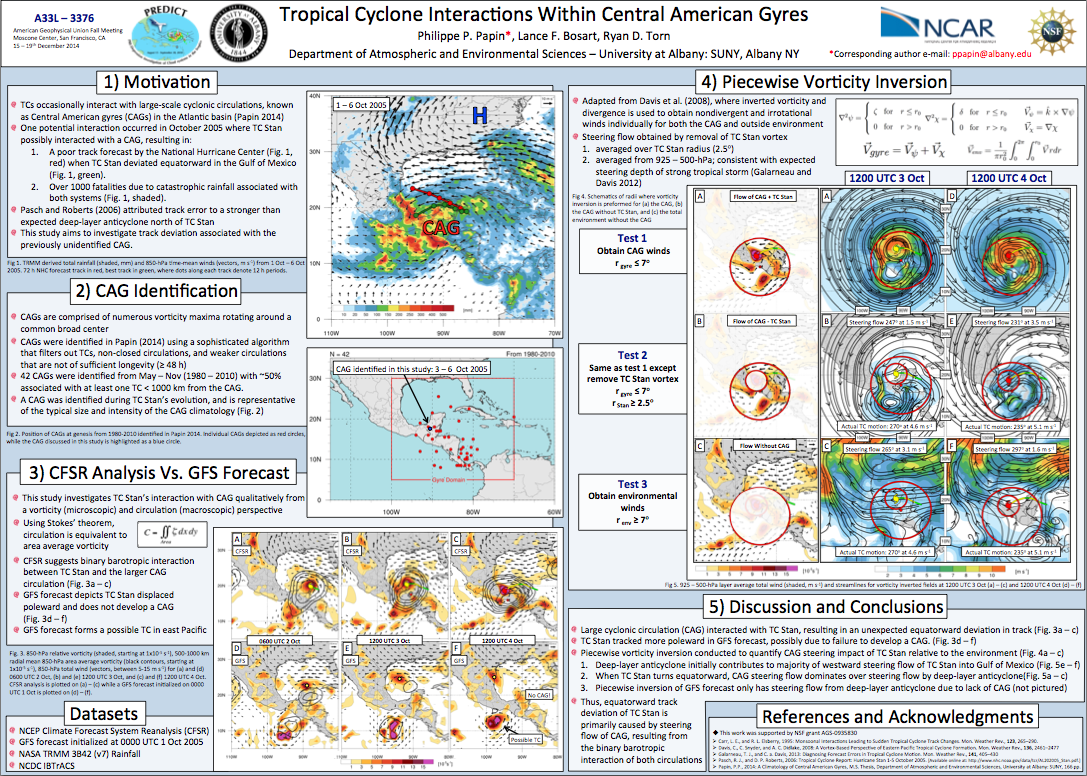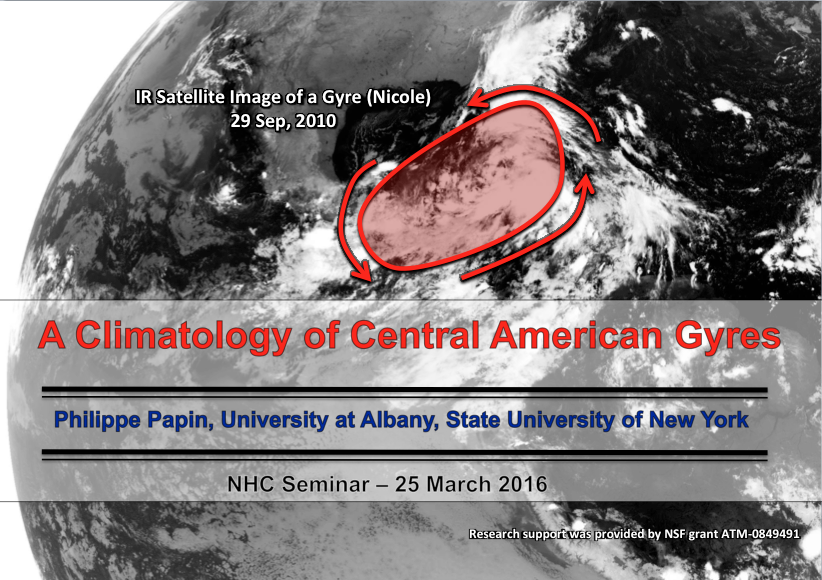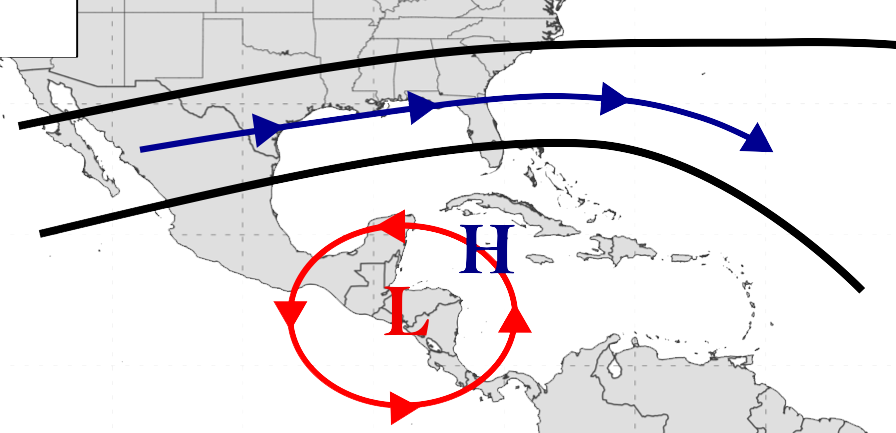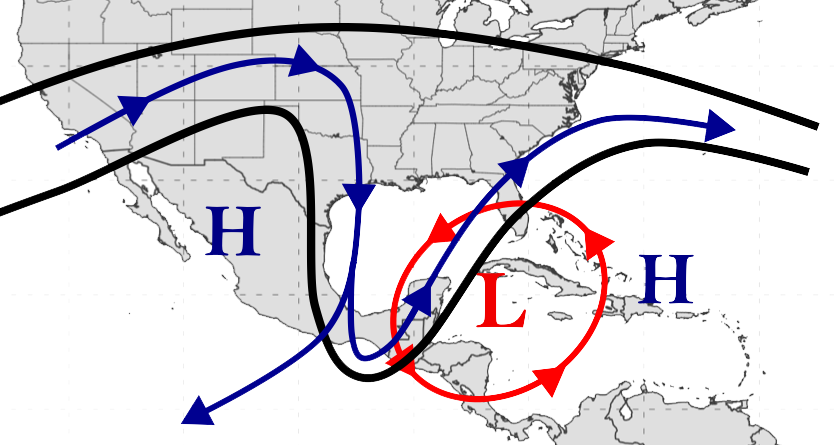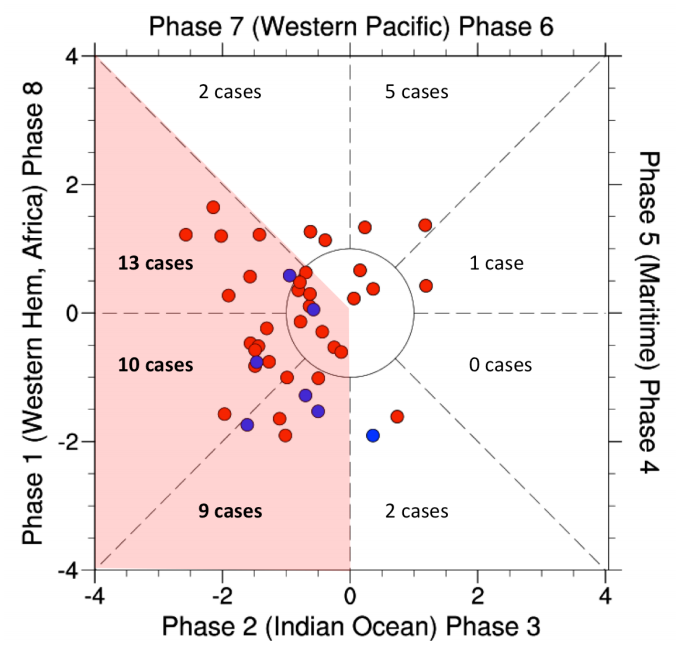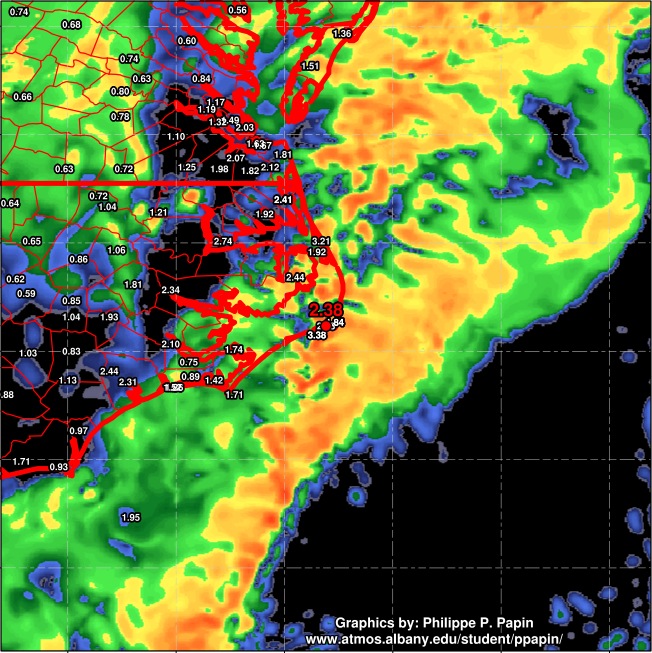Central American gyres (CAGs) are large, low-level, cyclonic circulations that are
observed over Central America during the tropical cyclone (TC) season. CAGs often
occur in conjunction with TCs, and can result in torrential rainfall over portions of
Central America, the Caribbean Islands, and eastern United States. The lack of prior
research on CAGs, their apparent links to TC activity, and their association with highimpact
weather motivates this study.
To study CAG occurrence, an algorithm was developed to identify cyclonic circulations possessing similar characteristics to monsoon depressions (MDs) and monsoon gyres (MGs) in other ocean basins. This algorithm also includes a series of tests that distinguishes CAG events from large TCs and non-closed circulations. This algorithm was run between May-November 1980-2010 using the National Centers for Environmental Prediction Climate Forecast System Reanalysis 0.5o gridded dataset to produce the CAG climatology. 42 CAGs were classified (~1.4 per season) with a bimodal distribution of occurrence favoring the early (May-Jun) and late (Sep-Nov) TC season. Stratification of CAG occurrence by the phase of the Madden Julian Oscillation (MJO) shows that over 75% of all CAGs develop in phases 8,1, and 2.
A gyre-relative, time-lagged, CAG composite analysis is performed on CAG cases spanning from three days prior to two days after CAG formation. Positive low-level geopotential height anomalies are present in the east Pacific and Atlantic basins and are associated with anomalous low-level flow before the formation of the CAG. This results in increasing cyclonic vorticity near anomalously high precipitable water over Central America, a pattern that aids the generation of deep convection and the broad closed low-iii level cyclonic circulation that defines the CAG. CAGs are also split into two subsets using potential vorticity (PV) on the 350K isentropic surface. Tropical CAGs possess upper-tropospheric ridging associated with low PV air, while trough CAGs possess upper-tropospheric troughing associated with high PV air. TCs exist in about half of all CAGs, and tend to occur on the eastern side of the CAG circulation. Case studies and conceptual models are presented to illustrate key synoptic features that occur prior to, during, and after CAG formation.
To study CAG occurrence, an algorithm was developed to identify cyclonic circulations possessing similar characteristics to monsoon depressions (MDs) and monsoon gyres (MGs) in other ocean basins. This algorithm also includes a series of tests that distinguishes CAG events from large TCs and non-closed circulations. This algorithm was run between May-November 1980-2010 using the National Centers for Environmental Prediction Climate Forecast System Reanalysis 0.5o gridded dataset to produce the CAG climatology. 42 CAGs were classified (~1.4 per season) with a bimodal distribution of occurrence favoring the early (May-Jun) and late (Sep-Nov) TC season. Stratification of CAG occurrence by the phase of the Madden Julian Oscillation (MJO) shows that over 75% of all CAGs develop in phases 8,1, and 2.
A gyre-relative, time-lagged, CAG composite analysis is performed on CAG cases spanning from three days prior to two days after CAG formation. Positive low-level geopotential height anomalies are present in the east Pacific and Atlantic basins and are associated with anomalous low-level flow before the formation of the CAG. This results in increasing cyclonic vorticity near anomalously high precipitable water over Central America, a pattern that aids the generation of deep convection and the broad closed low-iii level cyclonic circulation that defines the CAG. CAGs are also split into two subsets using potential vorticity (PV) on the 350K isentropic surface. Tropical CAGs possess upper-tropospheric ridging associated with low PV air, while trough CAGs possess upper-tropospheric troughing associated with high PV air. TCs exist in about half of all CAGs, and tend to occur on the eastern side of the CAG circulation. Case studies and conceptual models are presented to illustrate key synoptic features that occur prior to, during, and after CAG formation.
Poster Presentation given at the AGU Fall 2014 Meeting (Dec 2014)
(Click the image to enlarge)
Seminar given at the National Hurricane Center (March 2016)
(Click the image to view a video of the Presentation ~1 hour long)

